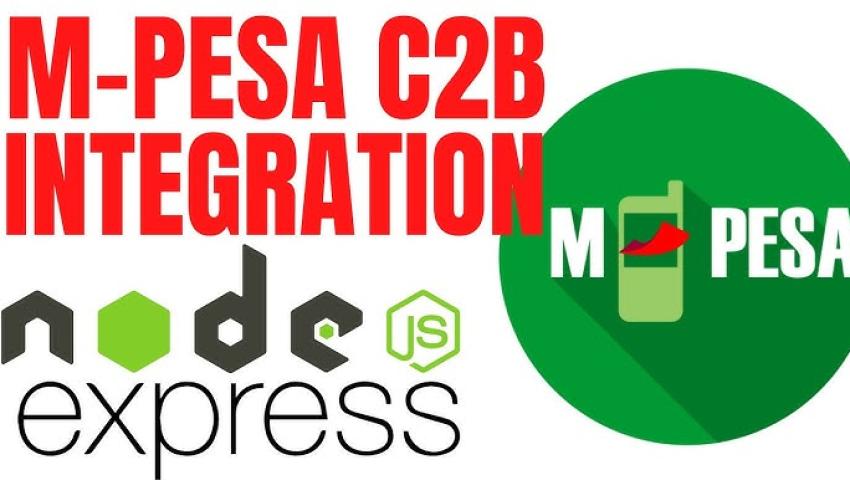
Integrating M-Pesa API with Node.js
M-Pesa is the leading mobile money payment system in Africa. If you’re building a Node.js application that requires mobile payments, integrating the M-Pesa Daraja API is crucial.
This guide will take you through step-by-step integration, covering:
✅ Generating an M-Pesa API Access Token
✅ STK Push (Lipa na M-Pesa Online Payment)
✅ C2B (Customer to Business Payments)
✅ B2C (Business to Customer Payments)
✅ Transaction Status Inquiry
✅ Account Balance Inquiry
1. Understanding M-Pesa Daraja API
The M-Pesa Daraja API is a set of RESTful APIs provided by Safaricom that allow businesses to process mobile payments.
Key Features
| Feature | Purpose |
|---|---|
| STK Push (Lipa na M-Pesa Online Payment) | Allows customers to pay via M-Pesa by receiving a payment request on their phone. |
| C2B (Customer to Business Payments) | Enables customers to send money to a business Paybill or Till number. |
| B2C (Business to Customer Payments) | Allows a business to send money to a customer’s M-Pesa account. |
| Transaction Status Query | Checks if a transaction was successful. |
| Account Balance Inquiry | Retrieves the balance of a Paybill or Till number. |
2. Prerequisites
Before integrating M-Pesa API into Node.js, ensure you have:
Required Accounts and Tools
✅ M-Pesa Developer Account → Register here
✅ Business Shortcode (Paybill or Till Number)
✅ M-Pesa API Credentials (Consumer Key & Secret)
✅ Node.js Installed (Latest version recommended)
✅ Express.js (For handling API requests)
Install Required Packages
npm install express axios dotenv body-parser cors
3. Getting Your M-Pesa API Credentials
To access the M-Pesa API, you need:
✅ Consumer Key
✅ Consumer Secret
How to Get API Credentials
- Go to Safaricom Developer Portal
- Log in or create an account
- Create a new App → Select M-Pesa API
- Copy your Consumer Key and Secret
4. Generating M-Pesa API Access Token
Before making any API calls, you must first authenticate using an Access Token.
Step 1: Create mpesa.js file
const axios = require("axios");
const dotenv = require("dotenv");
dotenv.config();
const generateAccessToken = async () => {
const consumerKey = process.env.MPESA_CONSUMER_KEY;
const consumerSecret = process.env.MPESA_CONSUMER_SECRET;
const auth = Buffer.from(`${consumerKey}:${consumerSecret}`).toString("base64");
try {
const response = await axios.get(
"https://sandbox.safaricom.co.ke/oauth/v1/generate?grant_type=client_credentials",
{
headers: {
Authorization: `Basic ${auth}`,
},
}
);
return response.data.access_token;
} catch (error) {
console.error("Error generating access token:", error);
}
};
module.exports = generateAccessToken;
✅ The access token expires in 60 minutes.
✅ Use this token in the Authorization Header for all API calls.
5. Implementing STK Push (Lipa na M-Pesa Online Payment)
What is STK Push?
STK Push allows customers to pay businesses via M-Pesa by receiving a payment request on their phone.
Step 1: Sending STK Push Request
const express = require("express");
const axios = require("axios");
const generateAccessToken = require("./mpesa");
const dotenv = require("dotenv");
dotenv.config();
const app = express();
app.use(express.json());
app.post("/stkpush", async (req, res) => {
const accessToken = await generateAccessToken();
const businessShortcode = process.env.BUSINESS_SHORTCODE;
const passkey = process.env.MPESA_PASSKEY;
const phoneNumber = req.body.phone;
const amount = req.body.amount;
const callbackUrl = "https://yourdomain.com/callback";
const timestamp = new Date()
.toISOString()
.replace(/[-:T.]/g, "")
.slice(0, 14);
const password = Buffer.from(`${businessShortcode}${passkey}${timestamp}`).toString("base64");
const payload = {
BusinessShortCode: businessShortcode,
Password: password,
Timestamp: timestamp,
TransactionType: "CustomerPayBillOnline",
Amount: amount,
PartyA: phoneNumber,
PartyB: businessShortcode,
PhoneNumber: phoneNumber,
CallBackURL: callbackUrl,
AccountReference: "TestPayment",
TransactionDesc: "Payment for goods",
};
try {
const response = await axios.post(
"https://sandbox.safaricom.co.ke/mpesa/stkpush/v1/processrequest",
payload,
{
headers: {
Authorization: `Bearer ${accessToken}`,
},
}
);
res.status(200).json(response.data);
} catch (error) {
console.error("Error sending STK Push:", error);
res.status(500).json({ error: "Error sending STK Push" });
}
});
app.listen(3000, () => {
console.log("Server running on port 3000");
});
✅ ResponseCode "0" means request sent successfully.
✅ The customer receives an M-Pesa prompt to enter their PIN.
6. Handling STK Push Callback Responses
After the payment, M-Pesa sends a callback response to the CallBackURL.
Step 1: Set Up an Endpoint to Handle Callbacks
app.post("/callback", (req, res) => {
console.log("Callback Response:", req.body);
res.status(200).json({ message: "Callback received" });
});
✅ M-Pesa sends a JSON response with payment status.
✅ Store successful transactions in your database.
7. Implementing C2B (Customer to Business Payments)
C2B allows customers to send money to your Paybill or Till Number.
Register C2B URLs
app.post("/registerC2B", async (req, res) => {
const accessToken = await generateAccessToken();
const payload = {
ShortCode: process.env.BUSINESS_SHORTCODE,
ResponseType: "Completed",
ConfirmationURL: "https://yourdomain.com/confirmation",
ValidationURL: "https://yourdomain.com/validation",
};
try {
const response = await axios.post(
"https://sandbox.safaricom.co.ke/mpesa/c2b/v1/registerurl",
payload,
{
headers: {
Authorization: `Bearer ${accessToken}`,
},
}
);
res.status(200).json(response.data);
} catch (error) {
res.status(500).json({ error: "Error registering C2B URL" });
}
});
✅ Customers can now send money to your Paybill/Till Number.
✅ You’ll receive real-time notifications.
🎉 Congratulations! You’ve successfully integrated M-Pesa API into Node.js.
💬 Questions? Comment Below! 🚀
Josphat Okutu
Leave a comment
Your email address will not be published. Required fields are marked *

